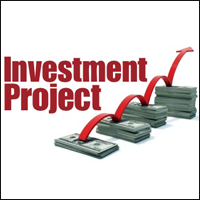The first half of the ongoing fiscal 2014-15 bears sufficient signs that project investment is gaining vigour. Improvement in project investment could have been better but for some developments that have slowed the pace. Thus, the pan-India Lok Sabha elections during April-May and state elections in mid-October in Maharashtra, a traditional powerful investment magnet, and Haryana, a small state but with good record in fresh projects, have apparently had a sobering effect on project investment. The elections in India cramp decision making of the concerned government for around one-and-a-half months spanning pre-election and post-election periods due to the preoccupation of the political leadership with polls and code of conduct that governs public administration during the election phase.
Providing micro-to-macro developed evidence on project investment, the 56th Survey done by ProjectsToday covering 50,000-plus projects in early October finds that projects stalled during H1 were one-eighth of the level recorded a year ago. Stalled projects, a major ailment of economy for around past two years, rendered trillions of rupees worth of capital investment unproductive, which strained the finances of banks and denied the nation of flow of goods and services, apart from pushing up the capital-output ratio for the country.
Project startups shot up 66 per cent. More importantly, project launches during July-September were two-and-a-half times those during April-June, the quarter that visibly bore the dampers of Lok Sabha elections.
Reflecting the surge in interest because of focused attention of the Modi government, project startups in manufacturing shot up threefold during April-September. The sector also led in completed projects.
All ownership categories recorded sharp increase, barring state governments which showed a lower level than that a year ago. The decline in state government investment was partly due to code of conduct dampers in state elections in investment major Maharashtra and small but upcoming Haryana.
Overall, the stock of projects went up 12 per cent over the year, quickening from 7.9 per cent a year ago and 7.3 per cent two years ago.
Project execution lacking vitality
Notwithstanding improvement in project startups, decline in stalled projects and a decent addition to stock of ongoing projects, project execution does not seem to have enhanced perceptibly.
The project implementation rate has deteriorated to 39.8 per cent, from 41.5 per cent in March, 42.8 per cent a year ago and 47.3 per cent in September 2011, according to the 56th Survey. In fact, this is the lowest ratio over past several years. Thus, projects on the drawing board and/or under planning stage is roughly one-and-a-half times that under execution. By the way, it is this segment that needs to be brought into active execution to get reflection in demand for project-related goods and services that would bring more business to project vendors and give rise to demand side of the country’s GDP. In fact, rate of increase in projects under execution works out to around a third of that assessed on the basis of total projects (including that on the drawing board or under planning stage). The implementation rate indicates the ratio of projects under execution to total projects on the monitor of ProjectsToday.
Going by macro indicators, gross fixed capital formation increased 7 per cent during the first quarter, after a decline in 2013-14 and stagnation in the previous fiscal, according to CSO data. In another pointer on some revival in project investment, construction grew 4.8 per cent over Q1, after stagnation in the preceding two quarters.
We, however, get confusing signals when we go by anecdotal evidence covering a slightly longer period. Orders and contracts secured by project vendors declined during H1, by 17-18 per cent to 1,111 in number and `1.28 trillion in value. Though restricted largely to government entities and hence lacking some value as execution indicator, H1 witnessed 15,406 tenders floated for project-related capital goods and services, which is lower than 19,433 tenders floated in H1 of 2013-14.
Production of capital goods declined for the second month in August, with the average growth over April-August placed at 4.3 per cent. Production of cement increased at double digits for the third month in August with cumulative growth assessed at 11 per cent, though because of erratic trend, alloy, non-alloy steel output was up 2 per cent (13 per cent) cumulatively.
| PROJECTS INVESTMENT & IMPLEMENTATION RATIO (%) | |||
| Y-o-Y % Increase | |||
| September | No. of Projects | Envisaged Investment | Implementation Ratio |
| 2007 | 16.7 | 8.0 | 44.0 |
| 2008 | 32.9 | 41.2 | 41.2 |
| 2009 | 20.7 | 22.6 | 45.1 |
| 2010 | 18.6 | 20.2 | 44.8 |
| 2011 | 10.9 | 12.4 | 47.3 |
| 2012 | 3.5 | 7.3 | 43.8 |
| 2013 | 6.7 | 7.9 | 42.8 |
| 2014 | 5.4 | 12.1 | 39.8 |
FDI into the country shot up 34 per cent to $14 billion during April-August, according to RBI compilation. At $9.9 billion, external commercial borrowing over April-August was, however, 15 per cent lower than that in the same period a year ago. Capex spend by central government ran marginally lower during April-August, notwithstanding 38 per cent shoot-up in August. Bank lending to infrastructure sectors ran 11 per cent higher annually in August, which is a half of the pace in this a year ago. Indicating that there is perhaps still no decisive upturn in demand for investment goods, the ERIL Index of Cost of Project Inputs slipped in September in terms of provisional data, and stagnated during H1.
The improvement in investment climate is apparently in terms of startup investment; project execution still perhaps suffers from diverse constraints, like lacking project finance, dwindling cash-flow from existing businesses, confusion in fuel/material linkages, delays in environment and forest clearances, judicial blocks, displaced persons opposition and project promoters’ incapacities.
Prospects
As for future outlook, lower inflation and crude oil prices should help government in achieving a reduction in subsidies and in freeing more resources for capital expenditure. The deficient monsoon could, however, play spoilsport Bottom-line of India Inc. has improved in Q1, but it reflected more the containment of expenditure than the top line growth. The next quarter should see some improvement in top line growth also.
Also, with a firmer Modi government at the Centre that is focused on unclogging the veins of the economic system, clearing policy hurdles in stalled projects and toning up the administration, a vital quality infrastructure in project investment vitality, the data on project investment is expected to reflect more perceptibly the upturn in project investment in the coming days. Reflecting an improved investment outlook, Madhya Pradesh could get investment proposals worth around Rs. 2.25 trillion in its global investors summit in October.











